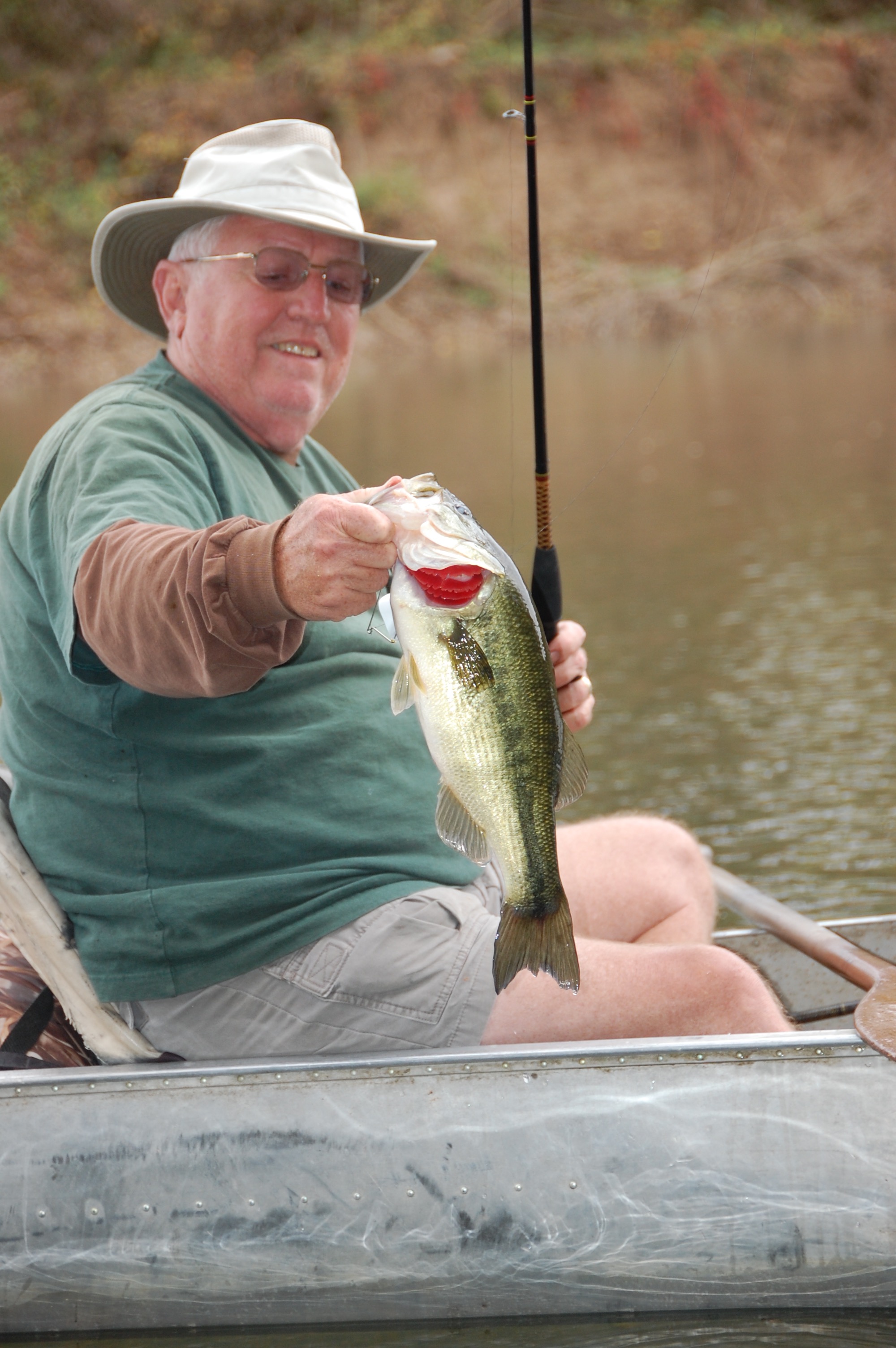Streamside in the Springtime
There was a time when I looked forward to the Fall, more than any other season. It was the break from the heat and the anticipation of Squirrel hunting, the upcoming bow season for deer and the changeing of color in the leaves that I looked for most. But, not so today! It's the Spring of the year that I get most excited about and I'm not sure why, either. I think it has to do with my age some. The renewal of Spring means more as I get older and I appreciate warm weather now a little more. Thre's just something about the coming of green grass, new leaves, wildflowers and the territorial song of Carolina Wrens, that turns my crank. I wish there was a way for me to explain the pure joy I feel when I shove off the gravel and into the river current on a bright, April morning. It won't matter which stream I'm on, nor will it matter if the fish are biting, it's more to do with the fact that life is awakening......and, I'm there on the water to witness it. There is somethhing about Spring in the Ozarks that has to do with our ancestral history, too. What I've been through in the past 60 years, what my parents, their parents and not least, what the Native American and the Frontiersmen that settled the Ozarks experienced in their lifetimes has a richer meaning to me as I reflect about the blessings of a Spring float trip. When I think about the fact that much has changed in the past 200 years, I'm inspired to appreciate the coming of each new year more deeply. Just a 190 years ago, Henry Schoolcraft and his guide, Pettybone, explored this region of the newly acquired Louisiana Purchase, and what he witnessed as compared to what's been lost in just a handful of generations should give pause to us all. On Tuesday, January 12th 1819, his Journal as he traveled down the White River in Arkansas included this entry, "we have passed several hunter's cabins on both banks of the river, but met nothing of particular note until our arrival at the Bull Shoals......., Here the river has a fall of fifteen or twenty feet in the distance of half a mile, and stands full of rugged calcareous rocks, among which the water foams and rushes with astonishing velocity and incessant noise..., whose whirling boiling and unceasing roar warns,...long before he reaches the rapids......In a few moments, notwithstanding every effort to keep our barque (30 foot canoe) headed downwards, the conflicting eddies drove us against a rock and we were instantly thrown broadside upon the rugged peaks which stand thickly in the swiftest part of the first schute, or fall". Schoolcraft and his faithful guide survived the rapids that day; but in 2009 much has been lost including this thundering shoal now under hundreds of feet of water at the dam site of Bull Shoals Lake. Gone too are the herds of Buffalo and Elk. The Mountain Lion, the Bear and the Wolf are no longer there as the predator of the abundant game. And then, there's his description of the Ozark prairies at the time that makes one wonder about the vast views with Blue Stem Grass as high as your head on horseback as far as could be seen. He records much on his 90 day Journey. Dozens of streams are described in detail during his circular route through the wilderness. The neat thing, though, is that in many ways very little has changed from my view as I course these creeks and rivers from my own, big canoe. I too can see the massive Sycamores and the clear, free-flowing waters. In his travels he speaks in great detail of many streams, the Current, the Huzzah and the North Fork of the White. Bryant Creek, the Beaver, the Finley and the James. All of these and dozens of others, are still out there along with the Eagles and the Otter. But, it's the Smallmouth and the Goggle eye that I'm after on a Spring Float trip. If anything has remained wild in the last 200 years, it's our streams and their abundant resources. Pound for pound, I believe a Smallmouth reflects this tenacity for wildness most! A Smallmouth doesn't "hit" your lure, it's more of a "jolt" from out of the depths. I've lost the grip on my rod many times from the strike of a Smallmouth, and then there's the battle that follows. Many times the run will be straight at the canoe and if you don't keep a tight line, you'll lose the fight. Just as frequently there will be a tail-wagging, gill-shaking jump that can be as high as three feet above the water's surface and the lure pops free and is thrown half-way back to the rod. I'll be searching for that 20 inch Smallmouth that's survived a decade or more. More then likely it'll be a female and could be carrying half a pound of eggs. Should I be fortunate enough to land her, I'll take a quick photo and she will be released. After all, in my view, it's the least I can do. We owe a debt to our Ozark heritage and I can do little to repay, but I can at least respect the resources that remain. As I travel our streams this Spring I'll take photos and I'll listen to the Warblers and the Gobblers. I may even stop and cook a mess of Goggle eye along a stream side gravel bar. I'll not be concerned about a possible raid of an Osage Indian party as I enjoy my cornmeal fryed filets. However, in the solitude of the wilderness, there is nothing that will prevent me from imagining one!
